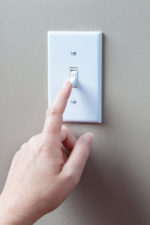How to Stop Invasive Species
Across the United States, goldfish are overrunning lakes and streams and threatening local ecosystems. Meanwhile, in western parts of the country, ornamental fountain grass, a decorative plant from Africa popularly used in landscaping, has been pushing out native grasses and ruining the natural habitat of frogs, toads, and other animals.
Invasive species can be found in nearly every ecosystem in the world, and human intervention is the cause of it all. Whenever we bring plants and animals from disparate places around the world to decorate our lawns and aquariums, these imports make their way into the local environment, sometimes with disastrous effects. Here’s how you can do your part to curb it.

The dangers of invasive species
A non-native species is considered invasive any time it spreads too well in its new environment and causes harm. And it’s not just nature that can be damaged by these aggressive visitors. Invasive insects, for example, can also eat crops, threatening food supplies, risking jobs, and negatively impacting the economy. Of course, not all exotic species fall under this category. Key American crops like tomatoes, wheat, and rice are all imports, but they don’t compromise local ecosystems the way invasive species do. Also, plants that would be invasive in some geographic locations might not be in others because of factors like climate or predators.
These dangerous guests can invade the United States in any number of ways. For instance, you may be able to find them being sold at local garden or pet stores; unfortunately, many consumers are unaware of their drawbacks. They can also hitchhike their way into the country via trade from other nations, which is how the tree-and-plant-gobbling spotted lanternfly is believed to have traveled here. Invasive species don’t always come from abroad, however. Even introducing a species from one state to another can create a problem, as it can then be spread even further via our shoes or clothing or by birds, bees, and other creatures.

Stop them at home
Thankfully, there are many ways you can help prevent the spread of invasive species. For starters, when selecting plants for your garden or yard, do your research or use an app like PlantNet to make sure that what you buy isn’t invasive to your area. Some of the most common ones that homeowners might unwittingly add to their yards include bamboo, the butterfly bush, English ivy, Japanese honeysuckle, and the Norway maple. All of these are beauties—but they can still be incredibly destructive outside of their native environments.
If you really like the look of a particular invasive plant, you could try planting a similar-looking one that’s native to your area instead. For instance, the Virginia creeper is an ivy found naturally throughout eastern and central North America that can be used as a ground cover just like English ivy. (As a bonus, its leaves turn a vibrant purple or red in fall.) Alternatively, if you have your eye on an exotic plant like bamboo, you could opt for a noninvasive variety, such as a clumping kind of bamboo that grows much more slowly than invasive varieties and won’t harm the local ecosystem.
The most effective solution, though, is to simply plant native plants since they are often best for feeding and sustaining local insects, bees, and birds. You can use the handy tool on the National Audubon Society’s website to look up what grows naturally in your area.

If you already have a plant, bush, or tree in your yard or garden that’s considered invasive for your locale, you can remove it by pulling it up or cutting it at the roots; just make sure to bag it carefully to prevent its seeds from spreading elsewhere. To get advice on how to handle specific invasive plants found in your yard, contact your local Master Gardener program.
When it comes to invasive animals, the most important action you can take is to properly care for your pets. The exotic pet trade is one of the primary causes of the spread of invasive species in our country; animals like exotic lizards, birds, and fish get into the environment when they escape their cages or enclosures or when their owners release them into the wild. These animals then become a threat to the biodiversity of local habitats, endangering native species. So if you own a pet that you can no longer keep, try to find a suitable home for them, such as by reaching out to any interested friends or family, taking them to an animal shelter or your vet, or returning them to the pet store.

Help your community
In addition to making efforts at home to slow the spread of invasive species, you could donate your time to their identification and removal. For example, some state and national parks regularly host hikes that volunteers can join to locate and pull up harmful plants. If you can’t find a local removal effort, host one of your own instead.
Prevention is the best way to curtail the spread of invasive species, so it’s important to be vigilant. But even when dealing with non-native species that have already spread, it’s still possible to reduce their effect by working to boost awareness and reduce their prevalence.


















